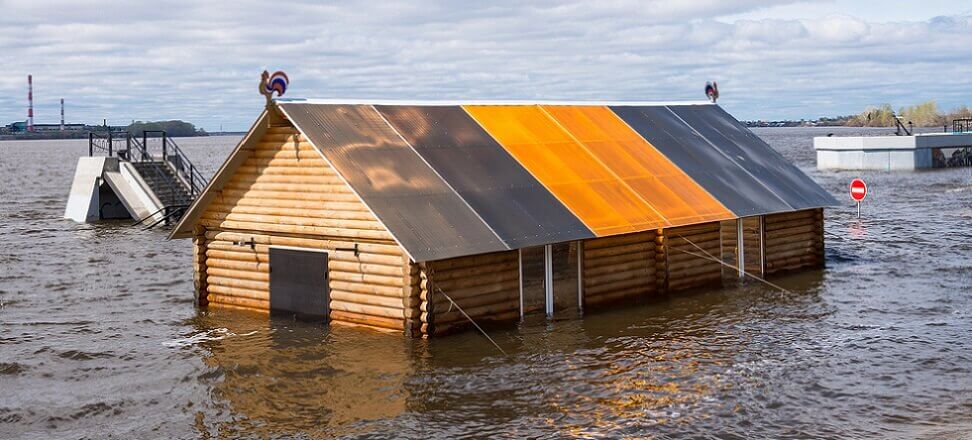On the evening of April 5 this year. In Orsk, there was a dam break in Russia, on the Ural River. A huge flood wave has inundated the Orenburg region, where a state of emergency has already been declared. A dangerous situation also prevails in neighboring Kazakhstan. According to the independent newspaper The Moscow Times, more than 6,500. homes were flooded, and more than 4,500. residents were evacuated. Authorities warn that floods could soon affect more regions.
Why was the dam in Russia destroyed?
In recent days, intense snowmelt in the Siberian region has caused the Urals, the third longest river in Europe, to surge. According to the Russian news agency Tass, the water level reached 9.27 meters, exceeding the alert level by 2 meters. The first breach of the Orsk dam took place on Friday, April 5, at 8:30 pm Moscow time. More structural violations occurred at night and in the morning. As a result, the water level has risen by up to 4 meters in the Orenburg region. According to the Kremlin, such a rate has not been observed for more than 100 years.
Unfortunately, a damaged dam in Russia is causing constant water surges in the Orenburg region. It’s already slowing down – a 28 cm increase was reported on Sunday – but it’s not expected to culminate until tomorrow. Authorities predict that the situation will stabilize after April 20, when the water subsides.
The destroyed dam on the Ural River was built in 2014. Moscow authorities have already opened an investigation into possible negligence and violations of construction safety rules. Recall that the 2,428-kilometer-long Ural River has its source in the Ural mountains and flows through Magnitogorsk, Orsk and Orenburg, where it joins the Sakmara and then, crossing the territory of Kazakhstan, flows into the Caspian Sea.
Dramatic situation in the Orenburg region
Meanwhile, the fight against the effects of the elements continues throughout the region. Orsk, a city with a population of nearly 240,000, is flooded. And Orenburg, located 276 km further east, with 570,000. citizens. Forty-seven bridges and 106 stretches of road have been closed, making it difficult for affected people to communicate. There are more than 1,100 rescuers working throughout the Orenburg region using amphibious vehicles capable of carrying up to 50 people at a time. In Orsk, an oil refinery has been closed due to flooding, there is no electricity in 12 settlements, and water pressure in the water supply has been reduced.
More than 80,000 are being prepared in temporary shelters for evacuees. places that will be needed in case a black scenario develops. A total of about 11,000 citizens have been placed in the flood zone for the time being. No fatalities have been reported so far, but for sanitary reasons, authorities recommend drinking only bottled water. According to the Tass Agency, six adults and three children have already been hospitalized in Orsk. In Orenburg, water levels continue to rise threatening further residential areas. The city’s mayor, Sergei Salmin, is appealing to residents to move to safe zones, while announcing that he will order forced evacuations if necessary. City authorities estimate that the financial damage already amounts to about 21 billion rubles.
The dam disaster in Russia also has dramatic implications for Kazakhstan, located in the Ural River basin. The country’s President Kassym-Jomart Tokayev said Saturday that the current floods are the country’s biggest natural disaster in 80 years. According to the BBC , 12,000 people and 60,000. livestock have been evacuated. Even before the dam in Russia was damaged, floods in northern, central and eastern Kazakhstan flooded several villages, killed thousands of cattle and forced more than 19,000 people from their homes. At least four people were declared missing. And all because of an exceptional rise in temperature, which has dramatically accelerated the melting of the snow cover. In the city of Oral, 4,000 had already been evacuated before April 4. people, including 2,000. children.
More floods are forecast
The Ural dam disaster is not the only cause of the spring floods. Snow cover melting at an unprecedented rate is also threatening the northern Kurgan and Tyumen regions. The 310,000-strong city of Kurgan has already ordered the evacuation of zones located directly on the Tobol River, a tributary of the Irtysh. According to experts, flooding in these areas is inevitable, and the Russian Minister of Emergency Situations has already traveled to the site.

 Polski
Polski






